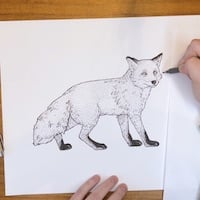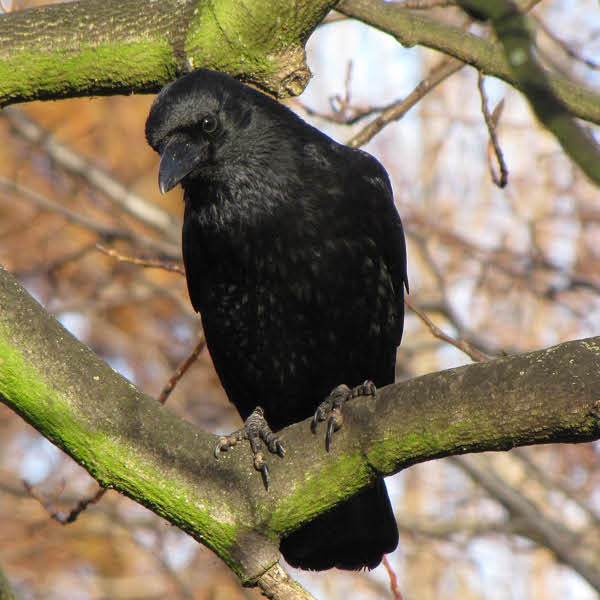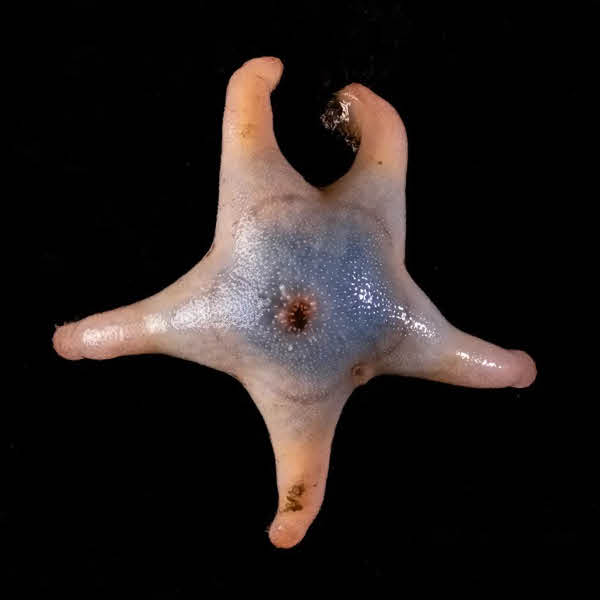
3-month-old dire wolf
Fans of Game of Thrones will be familiar with dire wolves, which were the faithful companions of the Stark children. But now, they're much more than characters in a hit television show. The species, which has been extinct for over 12,500 years, has been brought back to life by Colossal Bioscience. The de-extinction company announced that it had successfully birthed three dire wolves, a landmark achievement.
Using DNA from a 13,000-year-old tooth and a 72,000-year-old skull, Colossal used gene-editing technology to rewrite the DNA of the common gray wolf. Domestic dogs acted as surrogates and gave birth to three litters. Colossal's statement says that currently, two adolescent males (Romulus and Remus) and one female puppy (Khaleesi) are living on a 2,000+ acre secure expansive ecological preserve that is certified by the American Humane Society and registered with the USDA. Romulus and Remus, named after the mythical brothers who founded ancient Rome, were born on October 1, 2024, while Khaleesi, in a nod to Game of Thrones, was born on January 30, 2025.
Colossal has made headlines for years with its plans to bring back long-extinct species like the woolly mammoth and the dodo. Most recently, they've created a mouse hybrid with thick hair like a woolly mammoth. Dire wolves (Aenocyon dirus) were an American canid from the Late Pleistocene and Early Holocene epochs (125,000–10,000 years ago). They, along with much of the world's megafauna, went extinct early in the Holocene epoch in an event scientists are still attempting to explain.
While Colossal's dire wolves aren't exact DNA matches, the company's ability to edit the gray wolf's genes to closely resemble the species is laudable. And in this case, Colossal hasn't just focused on a pre-historic species. In the same announcement, the company revealed that it had also birthed several litters of red wolves from three different genetic lines. This critically endangered species is native to the southeastern United States and has been part of captive breeding programs since the 1970s. Colossal believes the genetic work that it does can help species like the red wolf survive.
“Preserving, expanding, and testing genetic diversity should be done well before important endangered animal species like the red wolf are lost,” says Harvard geneticist and co-founder of Colossal, Dr. George Church. “Another source of ecosystem variety stems from our new technologies to de-extinct lost genes, including deep ancient DNA sequencing, polyphyletic trait analyses, multiplex germline editing, and cloning. The dire wolf is an early example of this, including the largest number of precise genomic edits in a healthy vertebrate so far. A capability that is growing exponentially.”
However, not all scientists agree that what Colossal is doing is the path forward. “The reality is we can’t de-extinct extinct creatures because we can’t use cloning—the DNA is just not well enough preserved,” Nic Rawlence, an associate professor and director of the Palaeogenetics Laboratory at New Zealand’s University of Otago, tells The Washington Post.
Others are worried that precious funding resources earmarked for traditional conservation will be diverted to de-extinction technology, potentially causing more species to be lost. However, Interior Secretary Doug Burgum, who has the U.S. Fish and Wildlife Service under his umbrella, is enthusiastic about Colossal's progress. In an official statement posted to X (formerly Twitter), Burgum wrote that he was “excited about the potential of ‘de-extinction’ technology and how it may serve broader purposes beyond the recovery of lost species, including strengthening biodiversity protection efforts and helping endangered or at-risk species.”
For now, Colossal's dire wolves will continue to be studied, receiving lifetime care by veterinary experts, and with the potential to move to a larger preserve if needed.
For Colossal CEO Ben Lamm, this achievement is just a sign that their work is proceeding in the right direction. “I could not be more proud of the team. This massive milestone is the first of many coming examples demonstrating that our end-to-end de-extinction technology stack works.”
De-extinction company Colossal Biosciences has used gene editing to “revive” the dire wolf, which went extinct over 12,500 years ago.
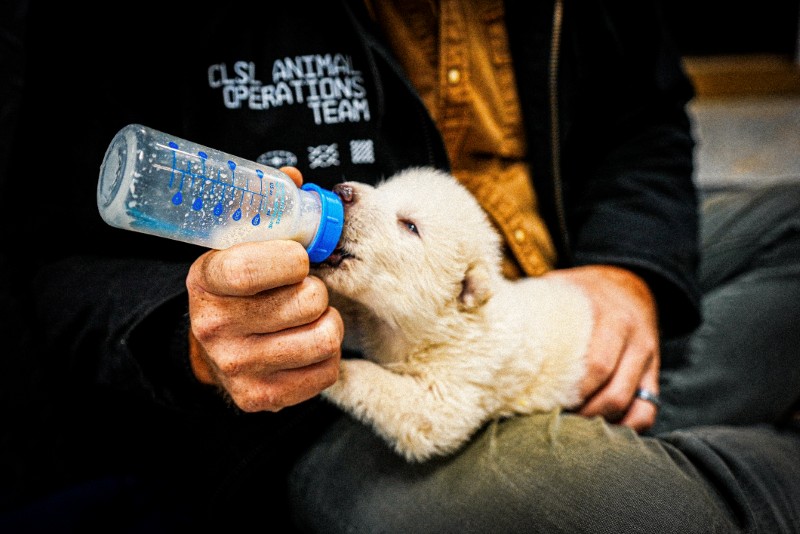
15-day-old dire wolf puppy
Using DNA from a 13,000-year-old tooth and a 72,000-year-old skull, Colossal used gene-editing technology to rewrite the DNA of the common gray wolf.
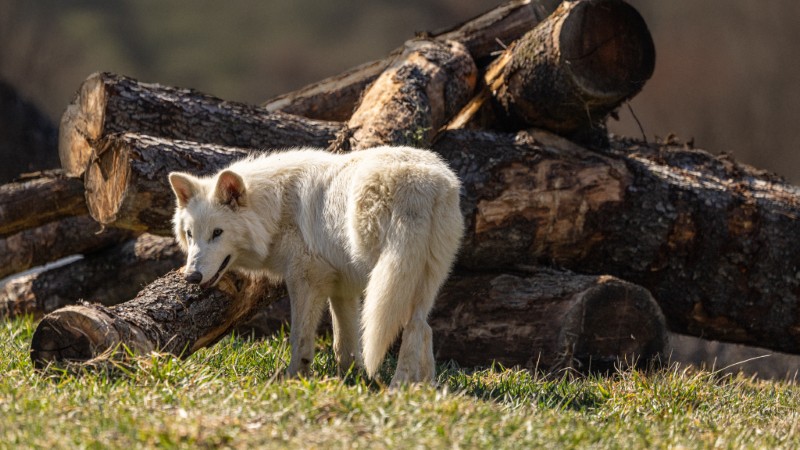
5-month-old dire wolf
Colossal CEO Ben Lamm says, “This massive milestone is the first of many coming examples demonstrating that our end-to-end de-extinction technology stack works.”
Colossal Bioscience: Website | Instagram
My Modern Met granted permission to feature photos by Colossal Bioscience.
Related Articles:
Scientists Thaw and Revive 46,000-Year-Old Roundworm
“De-Extinction” Biotech Company Is Working To Bring the Dodo Back To Life
“De-Extinction” Biotech Company Is Working To Bring the Woolly Mammoth Back To Life
In an Effort To Resurrect the Woolly Mammoth, Scientists Have Created the “Woolly Mouse”











